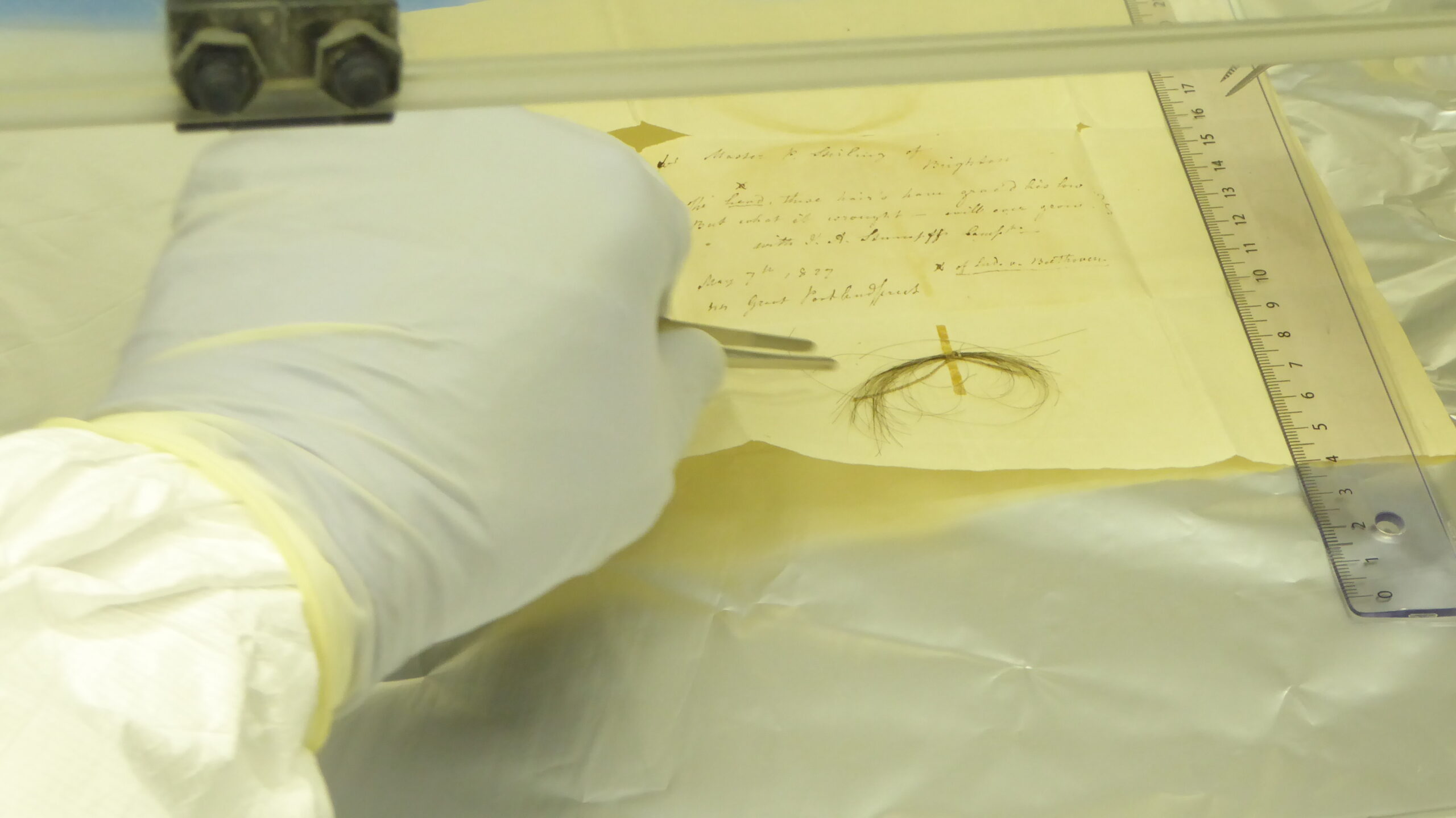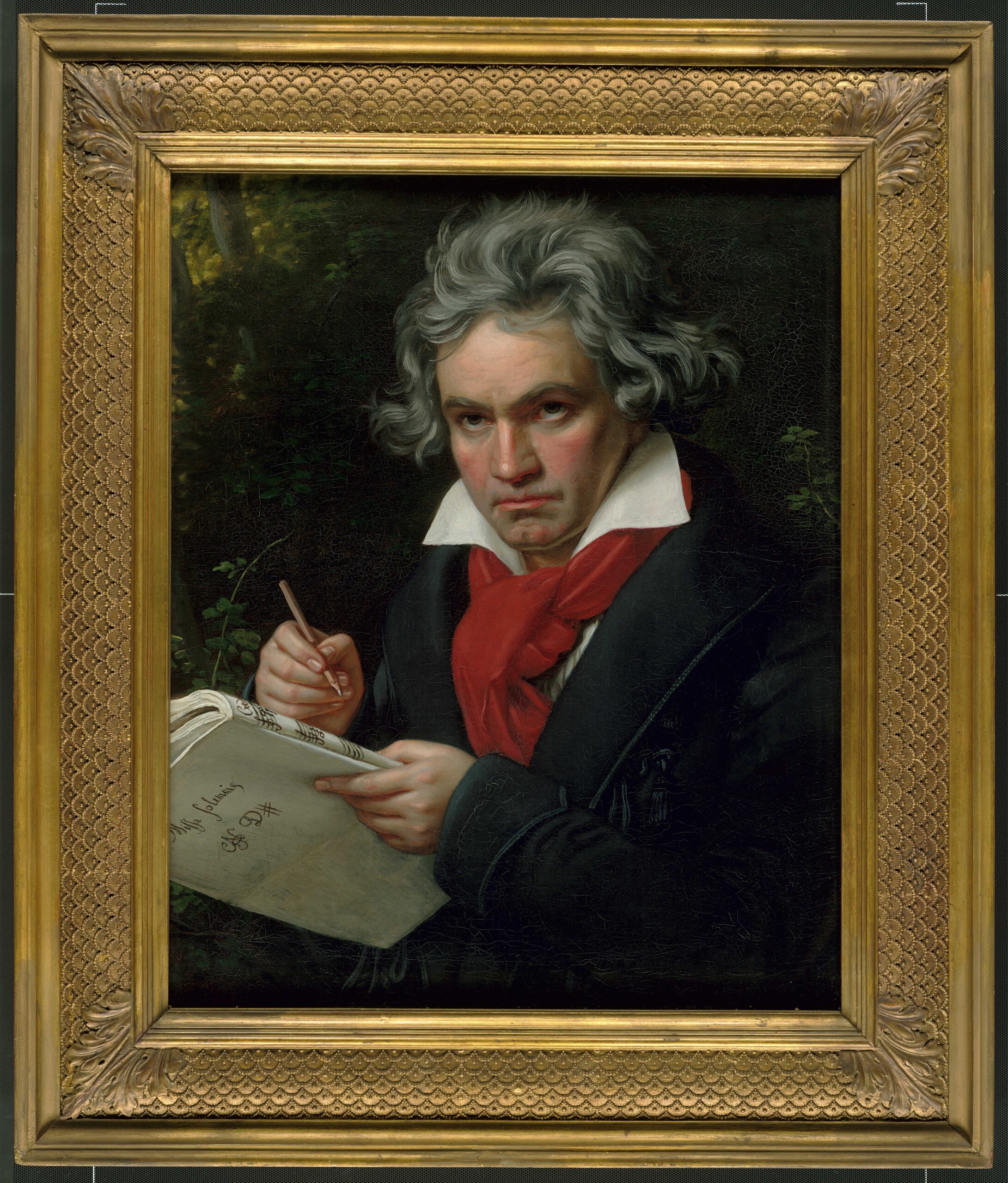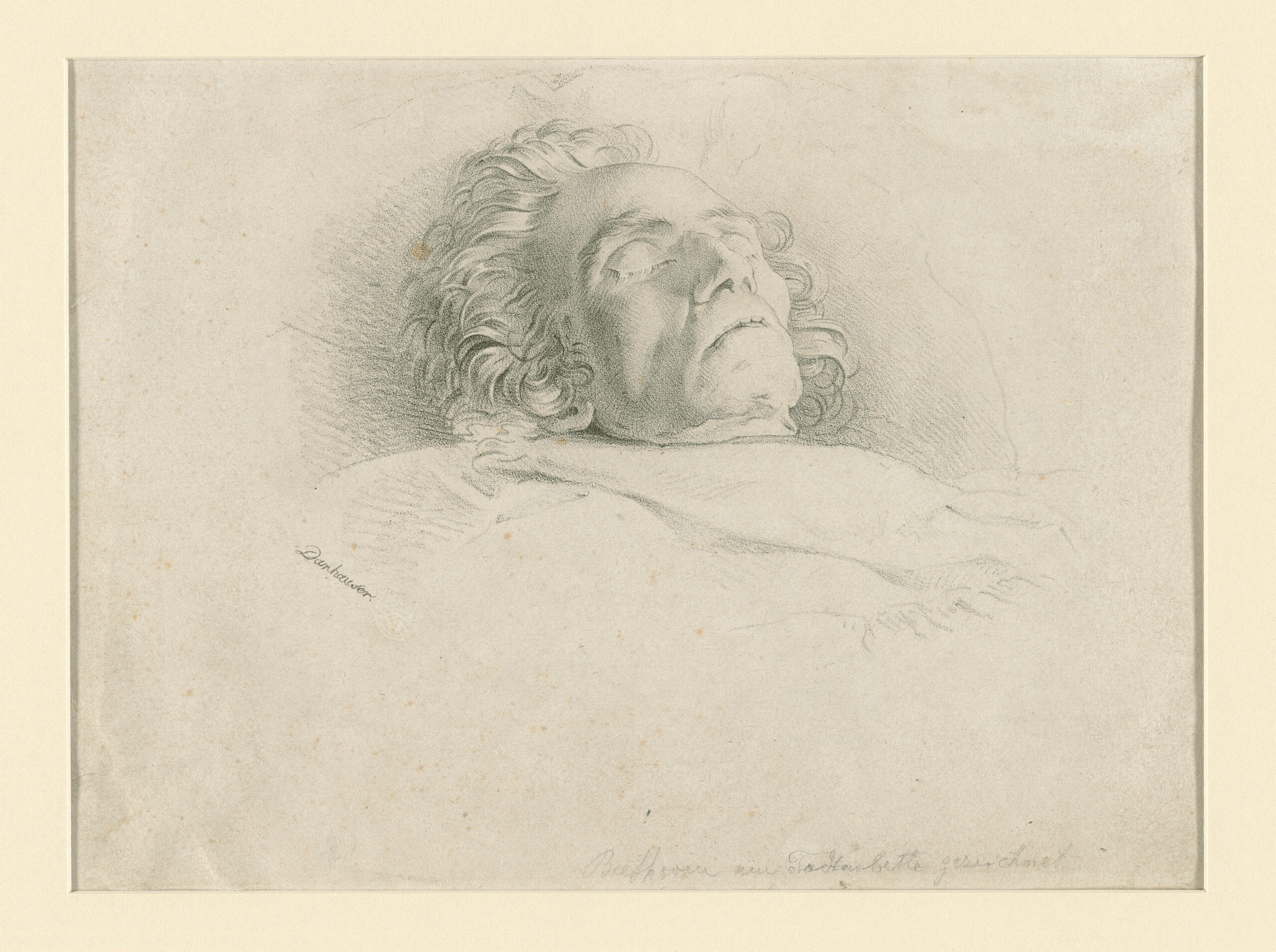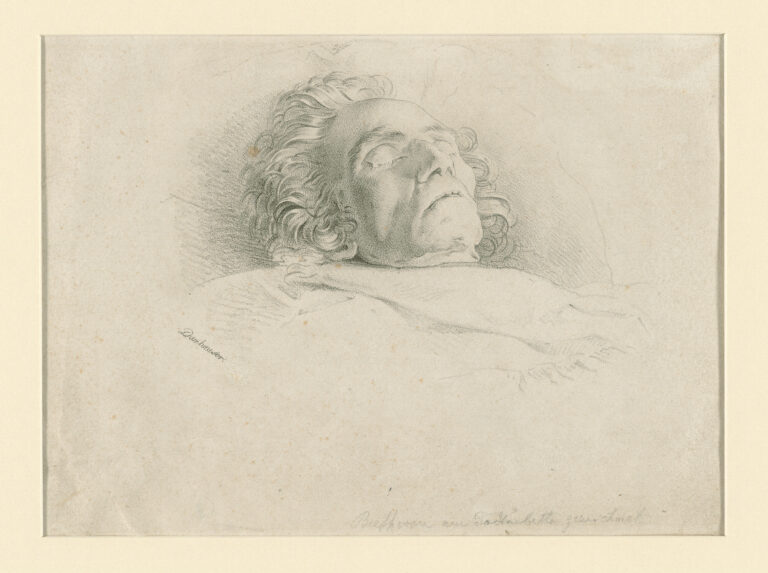
Image credit: Kevin Brown
“Our primary goal was to shed light on Beethoven’s health problems, which famously include progressive hearing loss, beginning in his mid- to late-20s and eventually leading to him being functionally deaf by 1818,”
said Johannes Krause from the Max Planck Institute for Evolutionary Anthropology in Leipzig, Germany.
“We were unable to find a definitive cause for Beethoven’s deafness or gastrointestinal problems,” Krause says. “However, we did discover a number of significant genetic risk factors for liver disease. We also found evidence of an infection with hepatitis B virus in at latest the months before the composer’s final illness. Those likely contributed to his death.”

Image credit: Ira F. Brilliant Center for Beethoven Studies, San Jose State University. Photo by William Meredith
As commonly happens when people analyze DNA, the researchers uncovered another surprise. Beethoven’s Y chromosome doesn’t match that of any of five modern-day relatives carrying the same last name and sharing, on the basis of genealogical records, a common ancestor with Beethoven’s paternal line. The finding points to an extramarital “event” somewhere over the generations on Beethoven’s father’s side.
“This finding suggests an extrapair paternity event in his paternal line between the conception of Hendrik van Beethoven in Kampenhout, Belgium in c.1572 and the conception of Ludwig van Beethoven seven generations later in 1770, in Bonn, Germany,” says Tristan Begg, now at the University of Cambridge, U.K.

Image credit: Kevin Brown
The idea for the work was conceived by Begg and study co-author William Meredith almost a decade ago. They were motivated by Beethoven’s request for postmortem studies to describe his illness and make it public. In the new study, the team, also including Toomas Kivisild of Katholieke Universiteit Leuven in Belgium, relied on recent improvements in ancient DNA analysis; these improvements have enabled whole-genome sequencing from small quantities of historical hair.

Image credit: Ira F. Brilliant Center for Beethoven Studies, San Jose State University.
(Under a Creative Commons Attribution-Share Alike 4.0 International license)
First, they analyzed independently sourced locks of hair attributed to Beethoven, only five of which they confirmed came from the same European male. They deemed these five to be “almost certainly authentic” and used them to sequence Beethoven’s genome to 24-fold genomic coverage.

Image credit: Susanna Sabin
Medical biographers had earlier suggested that Beethoven had many substantially heritable health conditions. But the researchers in this study couldn’t find in his genome an explanation for Beethoven’s hearing disorder or gastrointestinal problems. They did find that he was genetically predisposed to liver disease.

Image credit: Anthi Tiliakou
Further study of other DNA in his samples suggested that he also had a hepatitis B infection at least during the months leading up to his death.
“Together with the genetic predisposition and his broadly accepted alcohol consumption, these present plausible explanations for Beethoven’s severe liver disease, which culminated in his death,” they write.

Image credit: Beethoven-Haus Bonn
The researchers note that previous analyses suggesting that Beethoven had lead poisoning turned out to have been based on a sample that wasn’t Beethoven’s at all; instead, it came from a female. Future studies testing for lead, opiates, and mercury must be based on authenticated samples, they say.

Image credit: Beethoven-Haus Bonn
The DNA extracted from Beethoven’s hair is genetically most similar to that of people living in present day North Rhine-Westphalia, consistent with Beethoven’s known German ancestry, Begg says. Future studies of Beethoven’s samples collected over time might help to clarify when he got infected with hepatitis B. Meanwhile, more studies of his close relatives might help to clarify his biological relationship to modern decedents of the Beethoven family.
####
This work was supported by the American Beethoven Society and the Hugh Stuart Center Charitable Trust.
Current Biology, Begg et al.: “Genomic analyses of hair from Ludwig van Beethoven” https://www.cell.com/current-
DOI: http://dx.doi.org/10.1016/j.
Press release from Cell Press.



